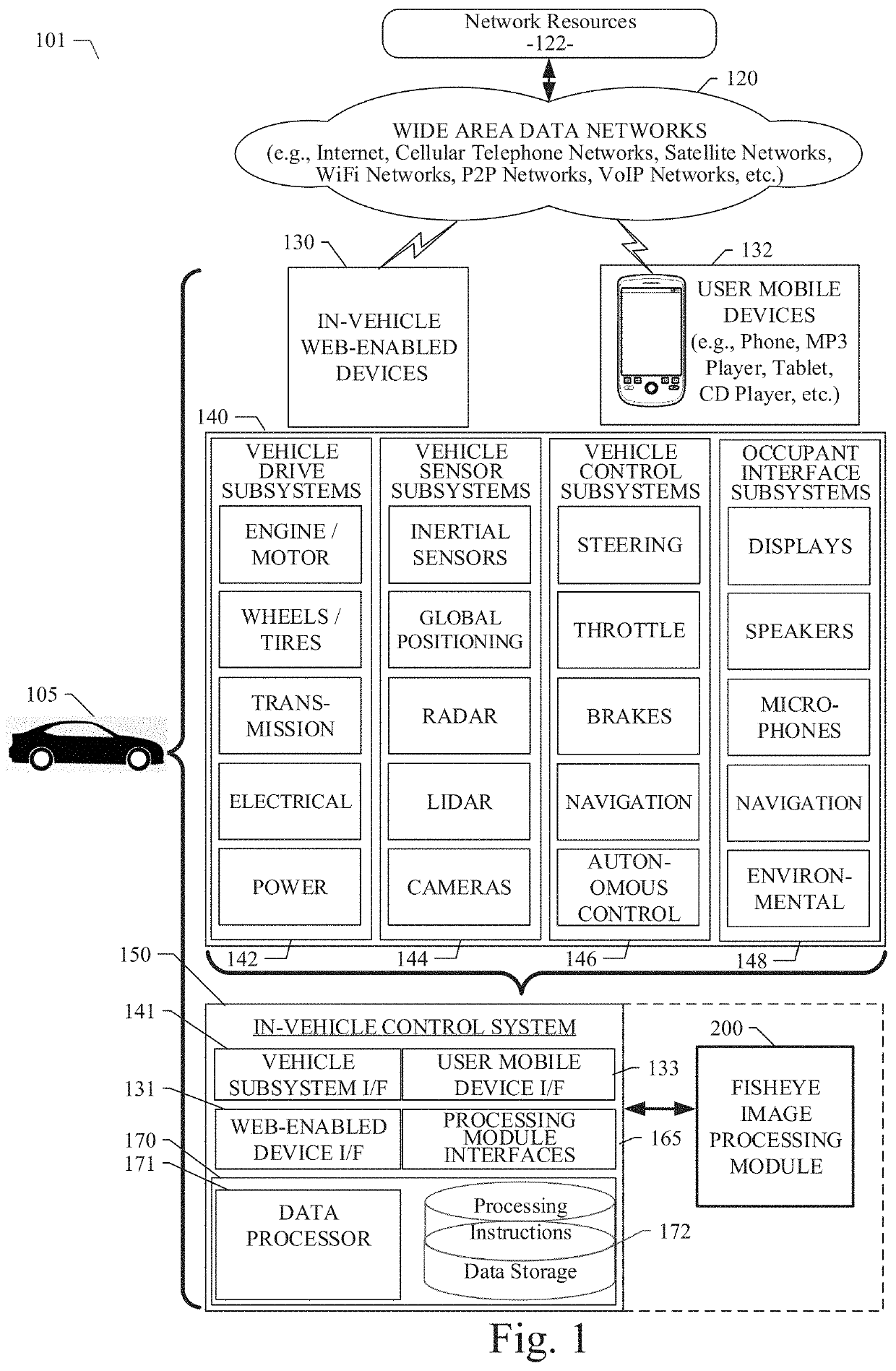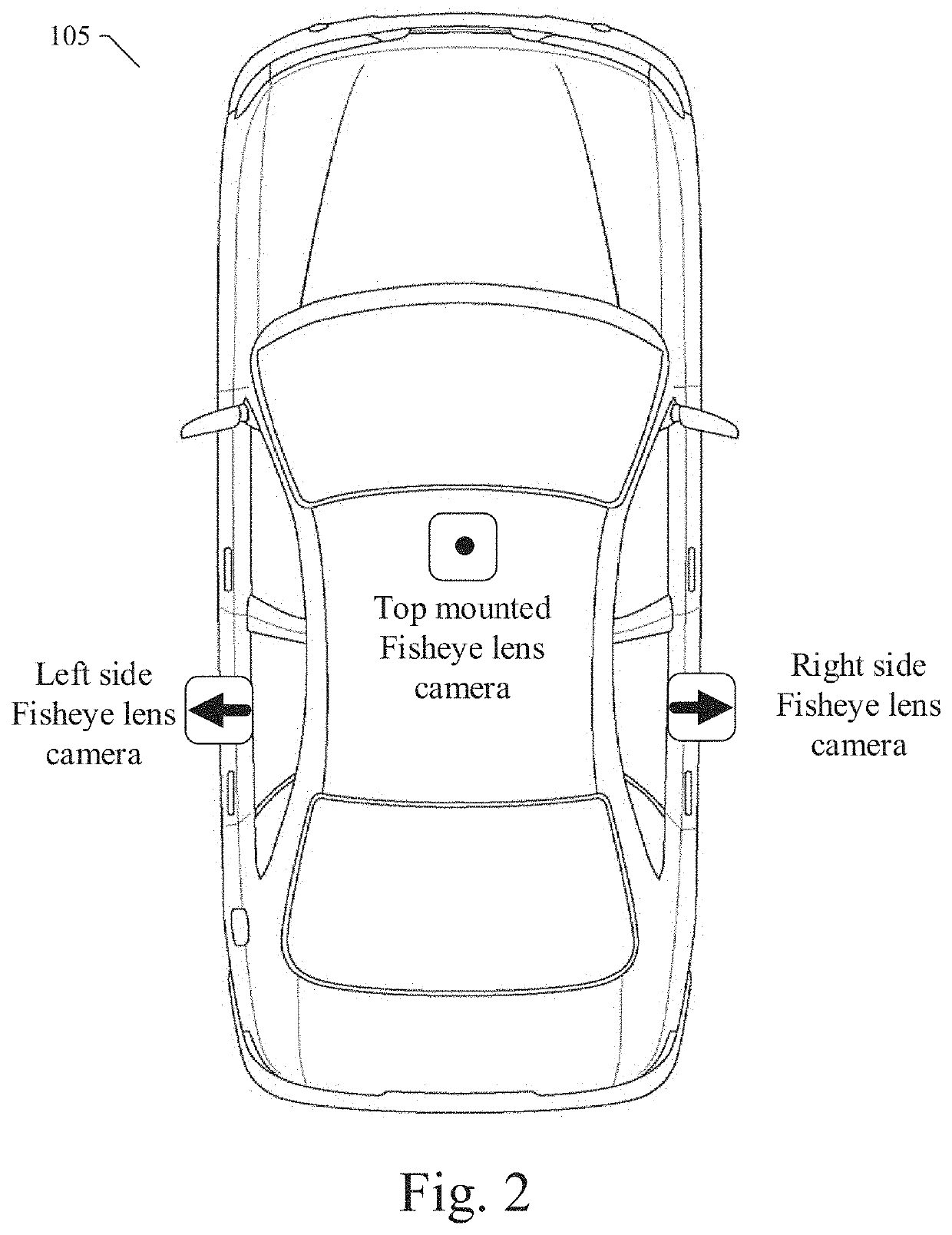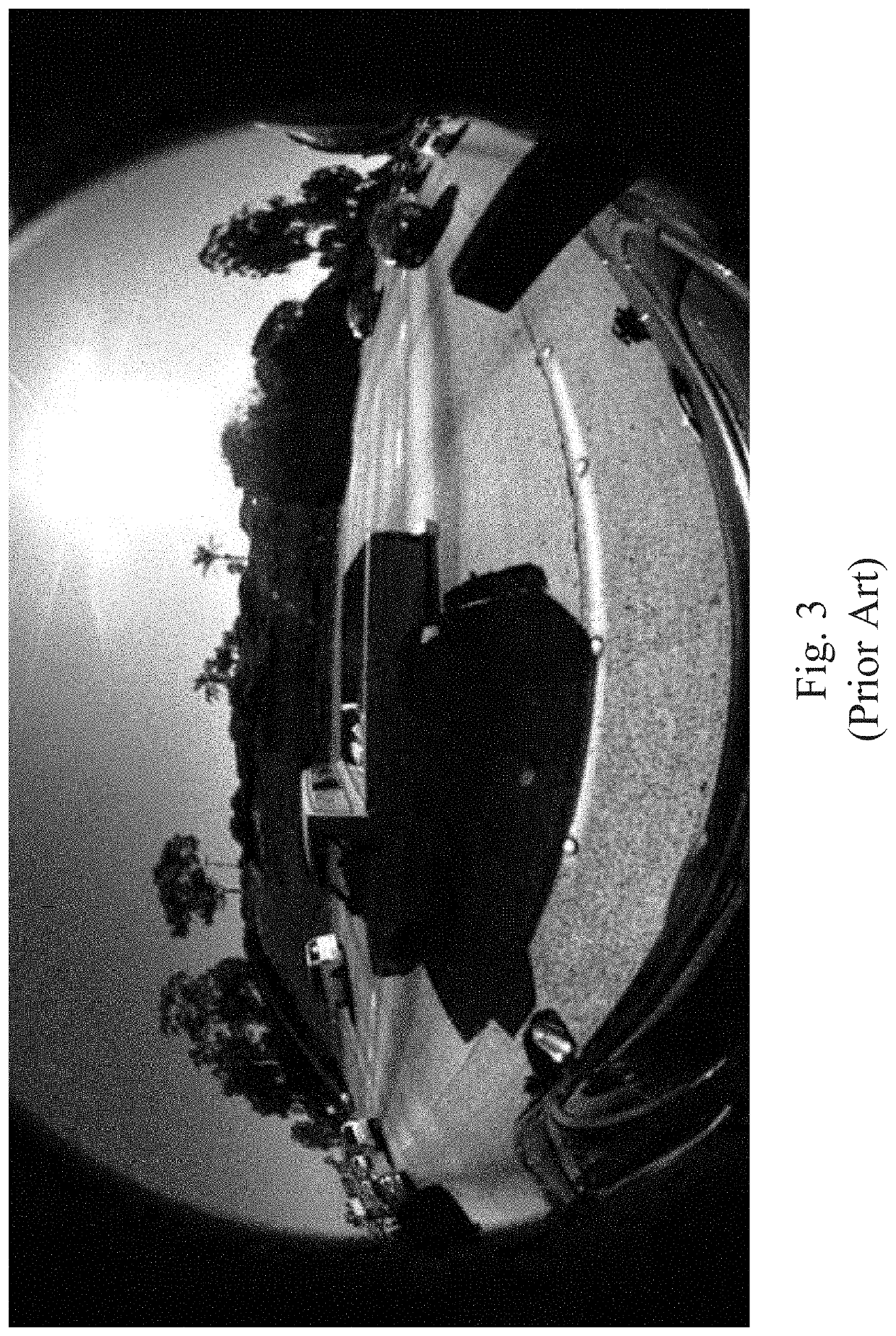System and method for fisheye image processing
a fisheye lens and image processing technology, applied in image enhancement, scene recognition, instruments, etc., can solve the problems of large image distortion, object detection, and important operational and safety issues of fisheye lens wide field of view, and achieve the effect of reducing human effor
- Summary
- Abstract
- Description
- Claims
- Application Information
AI Technical Summary
Benefits of technology
Problems solved by technology
Method used
Image
Examples
Embodiment Construction
[0018]In the following description, for purposes of explanation, numerous specific details are set forth in order to provide a thorough understanding of the various embodiments. It will be evident, however, to one of ordinary skill in the art that the various embodiments may be practiced without these specific details.
[0019]A system and method for fisheye image processing are disclosed. The example system and method for fisheye image processing can include a fisheye image processing system configured to receive fisheye image data from at least one fisheye lens camera associated with an autonomous vehicle. In various example embodiments disclosed herein, a fast end-to-end processing method is described for fisheye lens image data processing. The described data processing method can transform fisheye images to normal (non-distorted) images with an adjustable output size, field of view, and rotational orientation. The processing method of the example embodiments is fully optimized to a...
PUM
 Login to View More
Login to View More Abstract
Description
Claims
Application Information
 Login to View More
Login to View More - R&D
- Intellectual Property
- Life Sciences
- Materials
- Tech Scout
- Unparalleled Data Quality
- Higher Quality Content
- 60% Fewer Hallucinations
Browse by: Latest US Patents, China's latest patents, Technical Efficacy Thesaurus, Application Domain, Technology Topic, Popular Technical Reports.
© 2025 PatSnap. All rights reserved.Legal|Privacy policy|Modern Slavery Act Transparency Statement|Sitemap|About US| Contact US: help@patsnap.com



